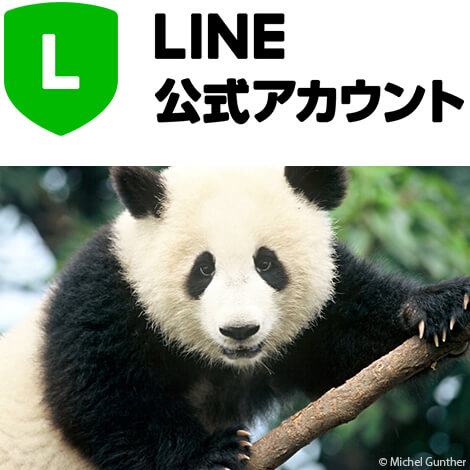Protecting Biodiversity in the Mekong River Basin
2017/10/06
From the Tibetan Plateau down to the South China Sea, the Mekong River runs through more than 4,000km long. Not only the diverse fish species in the Mekong River, such as catfish and carp which can grow to 3m long, but also a diversity of land animals like elephants and tigers live in the forests stretching out to the basin countries. However, along with proceeding infrastructure development including constructions of dams and roads on economic growth in Southeast Asian countries, environmental disruptions of the rivers and the forests are accelerating at a breakneck pace.
The Treasure Trove of Biodiversity
The mighty river Mekong runs through the Southeast Asian continent. It starts from the Tibetan Plateau, flowing through China's Yunnan Province, the Myanmar-Laos border, the Thai-Laos border, Cambodia, and into the sea from the Mekong Delta in Vietnam.
The river basin is one of the most biologically diverse areas in the world.
Approximately 430 mammals, 800 amphibians and reptiles, 1,200 birds, 1,100 fish, and 20,000 plant species are found in the Greater Mekong region.

Among these species are many endangered and endemic species, such as the Indochinese tiger, Asian elephant, saola, and Mekong giant catfish.
Furthermore, many new species are being discovered to this day in the Mekong River basin.
In the decade between 1997 and 2007, 1,068 new species were discovered, including bright-colored plants, reptiles, mammals, and birds.
In the year 2015 alone, 163 new species were found as well.
Thus, since 1997, over 2,400 new species were discovered in the Greater Mekong region.
This means that, on average, two species are discovered every week, and there is great possibility that there are still undiscovered species inhabiting this region.

WWF(2010)River of Giants; Giant Fish of the Mekong

Parafimbrios lao
The Increasing Destruction and Fragmentation of the Forest
However, within these species newly discovered are many that are already in danger of becoming extinct.
This is due to deforestation and the development of infrastructures caused by population increase and economic development in the Greater Mekong. In this region (excluding China's Yunnan Province), the forest area has decreased from 140 km2 to 98 km2 between 1973 and 2009.
The area of forest loss in these 40 years is equivalent to 1.4 times the area of Japan.

In Thailand and Vietnam, in particular, where deforestation was most severe, more than 40% of the forest was destroyed. In Vietnam, most of the native forest was lost.
In the entire Mekong region, too, native forests are becoming increasingly fragmented, and contiguous forest areas remain only in northern Myanmar, western Thailand adjacent to the Myanmar border, and northeast Cambodia (near the Cambodia-Laos-Vietnam border).
In this way, when forest fragmentation advances, wildlife can no longer move from one part of the forest to another, and their population is separated. As a result, population big enough to breed cannot be maintained and the danger of becoming extinct increases.
Furthermore, not only does the fragmentation of the forest make it easier for poachers and non-native species to enter, it increases the chances of forest fires and leads to the accelerating rate of deforestation and loss of biodiversity.

WWF GMP (2013) Ecosystems in the Greater Mekong Past Trends Current Status Possible Futures
The Cause of Deforestation
If the current rate of deforestation continues, 150,000-300,000 km2 of the forest will be lost by 2030, and it is projected that most of it will be at the Thai-Myanmar border and in the northeast Cambodia, where natural forests still remain.
Such large-scale destruction is caused by illegal logging, the cultivation of land for natural rubber and oil palms, the reclamation of land for pulp and paper plantations, etc.
In particular, Southeast Asia accounts for over 70% of the global production of natural rubber, and it is predicted that the land for natural rubber cultivation will further expand in Myanmar, Cambodia, and Laos in the future. 。

The World's Center of Illegal Wildlife Trade
Poaching and illegal trading of wildlife have become a great threat in the Mekong region as well.
This region has become the world's hub and final destination for wildlife trade, and the place known as the "golden triangle," which borders with Thailand, Myanmar, Laos, and China, has become its center.
According to the 2009 and 2013 research conducted by Myanmar's Mong La City, located at the center of the "golden triangle," parts of at least 39 tigers have been found, and it is considered that a third of the illegal trading of tigers worldwide goes through Myanmar.
Ivory, pangolin, leopards, clouded leopards, golden cat, and even African rhino horns are sold in Mong La City as well, and their retail price is estimated to be over four million US dollars.


The Chaotic Dam Construction Projects
Furthermore, the progression of dam construction project poses a serious threat to aquatic life in the Mekong.
Over ten dam construction projects are planned in Laos and Cambodia located in the Lower Mekong to meet the increasing demand for electricity brought by economic development.
However, the majority of these projects are being carried out without sufficient environmental impact assessments or appropriate follow-up measures. Thus, there is concern that many species living in the Mekong will be greatly impacted.

Moreover, 60 million people living in the Mekong River basin depend on the blessing of Mekong River for their livelihood, fishing and cultivating rice in the delta region. Thus, the random construction of dams will impact such local residents as well.
WWF's Work
In this way, the Greater Mekong has a rich natural environment with diverse species; however, environmental destruction is taking place at a rapid rate along with the economic development of the region. WWF branches in each country are working on various projects for the conservation of biodiversity in the Greater Mekong region.
Forest Monitoring
To understand the current condition of deforestation in the Greater Mekong and project where future forest loss will take place, WWF analyzes satellite images and conducts fieldwork. Based on our research, we identify priority conservation areas as well as illegal felling in the preservation area, project future deforestation according to road and farm density, and design prevention measures.

Promoting the Sustainable Production of Natural Rubber
WWF makes policy recommendations to the government to prevent the destruction of forests for the purpose of expanding natural rubber plantations. In order to respond to the increasing demand for natural rubber, we provide training for the producers, focusing on improving productivity without increasing plantation area.

Strengthening Law Enforcement on Illegal Wildlife Trade
In order to prevent the illegal hunting and capturing of wild animals, WWF supports enhanced patrol by rangers in national parks and natural reserves. Furthermore, we promote cooperation among government entities, such as the national parks authorities, police, and prosecutors, supporting the monitoring of and crackdown on wildlife trading and providing policy proposals for closing down illegal markets.

Policy Proposal for Constructing Dams
WWF has requested the countries of the region to freeze their dam construction plans in the lower Mekong River basin for ten years and create an environmental master plan based on scientific grounds. We also provide policy proposals for the use of renewable energy instead of relying on large-scale hydroelectric power generation.








